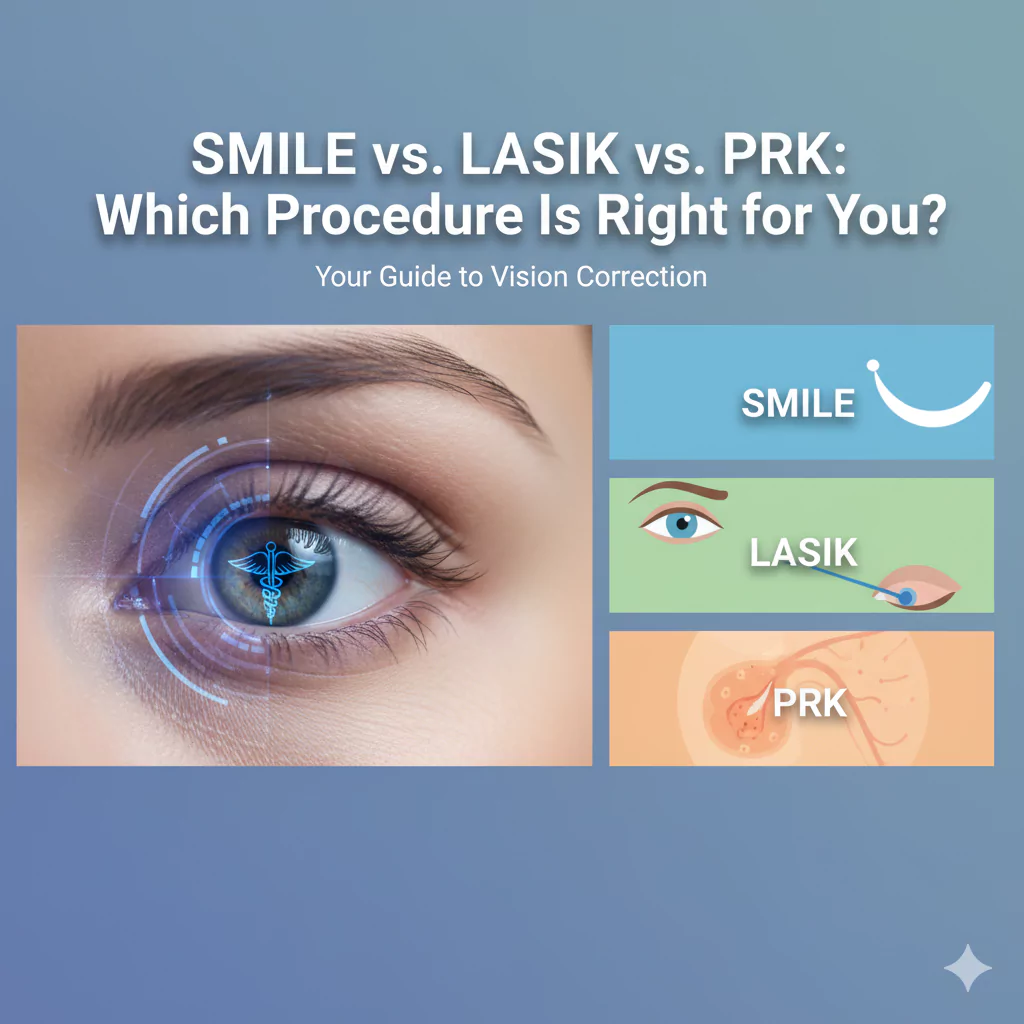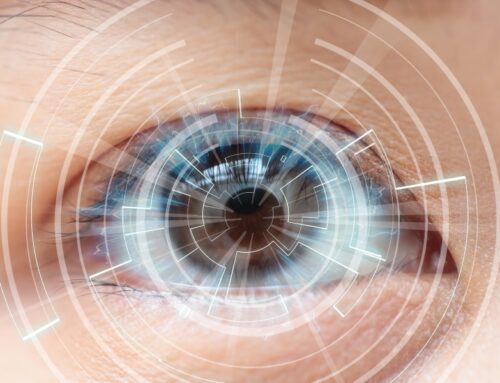SMILE vs. LASIK vs. PRK: Comparing Laser Eye Surgery
If you’ve been thinking about ditching your glasses or contact lenses, you’ve probably heard about vision correction surgeries like SMILE, LASIK, and PRK. Each of these procedures can dramatically improve your vision, but they work in different ways and are better suited to certain eyes and lifestyles.
Understanding the differences can help you have an informed conversation with your eye doctor — and figure out which one might be the best fit for you.
LASIK: The Most Well-Known Option
LASIK (Laser-Assisted In Situ Keratomileusis) is the most popular laser vision correction surgery.
How it works:
A surgeon creates a thin flap on the surface of your cornea, uses a laser to reshape the underlying tissue to correct your vision, and then replaces the flap.
Pros:
- Fast recovery (most people see clearly within a day or two)
- Minimal discomfort
- Highly precise and effective for correcting nearsightedness, farsightedness, and astigmatism
Cons:
- Requires a thicker cornea to be safe
- Rare risk of flap-related complications
- May cause temporary dry eye symptoms
LASIK is often best for people with stable prescriptions, healthy corneas, and active lifestyles who want quick results.
PRK: The Original Laser Procedure
PRK (Photorefractive Keratectomy) is the oldest type of laser eye surgery and doesn’t involve creating a corneal flap.
How it works:
The outer layer of the cornea (the epithelium) is gently removed, and then a laser reshapes the underlying tissue. The epithelium grows back as the eye heals.
Pros:
- Ideal for people with thinner corneas or certain eye surface irregularities
- No risk of flap complications
- Excellent long-term results, just like LASIK
Cons:
- Longer recovery (vision can be blurry for a week or more)
- More discomfort during the first few days
- Slightly higher risk of haze during healing (though rare with modern techniques)
PRK is often chosen by people who aren’t good candidates for LASIK because of thin corneas or who work in environments where eye injuries are more likely.
SMILE: The Newest Contender
SMILE (Small Incision Lenticule Extraction) is the newest of the three and uses a minimally invasive approach.
How it works:
A laser creates a tiny lens-shaped piece of tissue (called a lenticule) inside the cornea, which is then removed through a small incision.
Pros:
- Very small incision, which means faster healing of the surface
- Lower risk of dry eyes compared to LASIK
- No corneal flap needed
Cons:
- Currently only approved for certain types of nearsightedness and astigmatism
- Fewer surgeons offer it compared to LASIK
- Slightly longer time for vision to fully stabilize than LASIK
SMILE is often a great choice for people prone to dry eyes or those looking for a less invasive approach.
Which One Is Right for You?
Deciding between SMILE, LASIK, and PRK isn’t just about picking the newest or fastest option — it’s about matching the procedure to your individual eye structure, prescription, and lifestyle. Here’s what your eye doctor will consider (and what you should think about too):
- Corneal Thickness and Shape
- If your corneas are thick and healthy, LASIK may be the best fit because it requires creating a flap.
- If your corneas are thin or irregularly shaped, PRK or SMILE may be safer options.
- Prescription Type and Severity
- LASIK corrects nearsightedness, farsightedness, and astigmatism.
- SMILE is currently best for moderate nearsightedness and astigmatism, but not farsightedness.
- PRK works well for a wide range of prescriptions, especially if your corneas are borderline for LASIK.
- Lifestyle and Occupation
- If you play contact sports or have a job where eye trauma is possible (military, construction, etc.), PRK or SMILE may be better because they don’t involve a corneal flap.
- If you need to return to work quickly and don’t do high-impact activities, LASIK’s fast recovery is a major advantage.
- Dry Eye Concerns
- If you already struggle with dry eyes, SMILE or PRK may be more comfortable long-term since LASIK can sometimes worsen dryness temporarily.
- Recovery Time and Patience
- If you want the fastest recovery, LASIK usually lets you see clearly within 24–48 hours.
- If you can tolerate a slower healing period in exchange for other benefits, PRK or SMILE are worth considering.
In short:
- LASIK is great for quick recovery and clear vision if your corneas are thick and healthy.
- PRK is ideal for thin corneas or if you want to avoid flap-related risks.
- SMILE is perfect for those prone to dryness or who prefer a minimally invasive approach.
The Bottom Line
SMILE, LASIK, and PRK are all safe and effective ways to reduce or eliminate your dependence on glasses and contacts — but they’re not interchangeable. The best choice depends on your eyes, your needs, and your lifestyle.
The smartest next step is to schedule a comprehensive consultation. Your eye surgeon will map your corneas, measure your prescription, and help you choose the procedure that will give you the clearest, healthiest vision possible.






